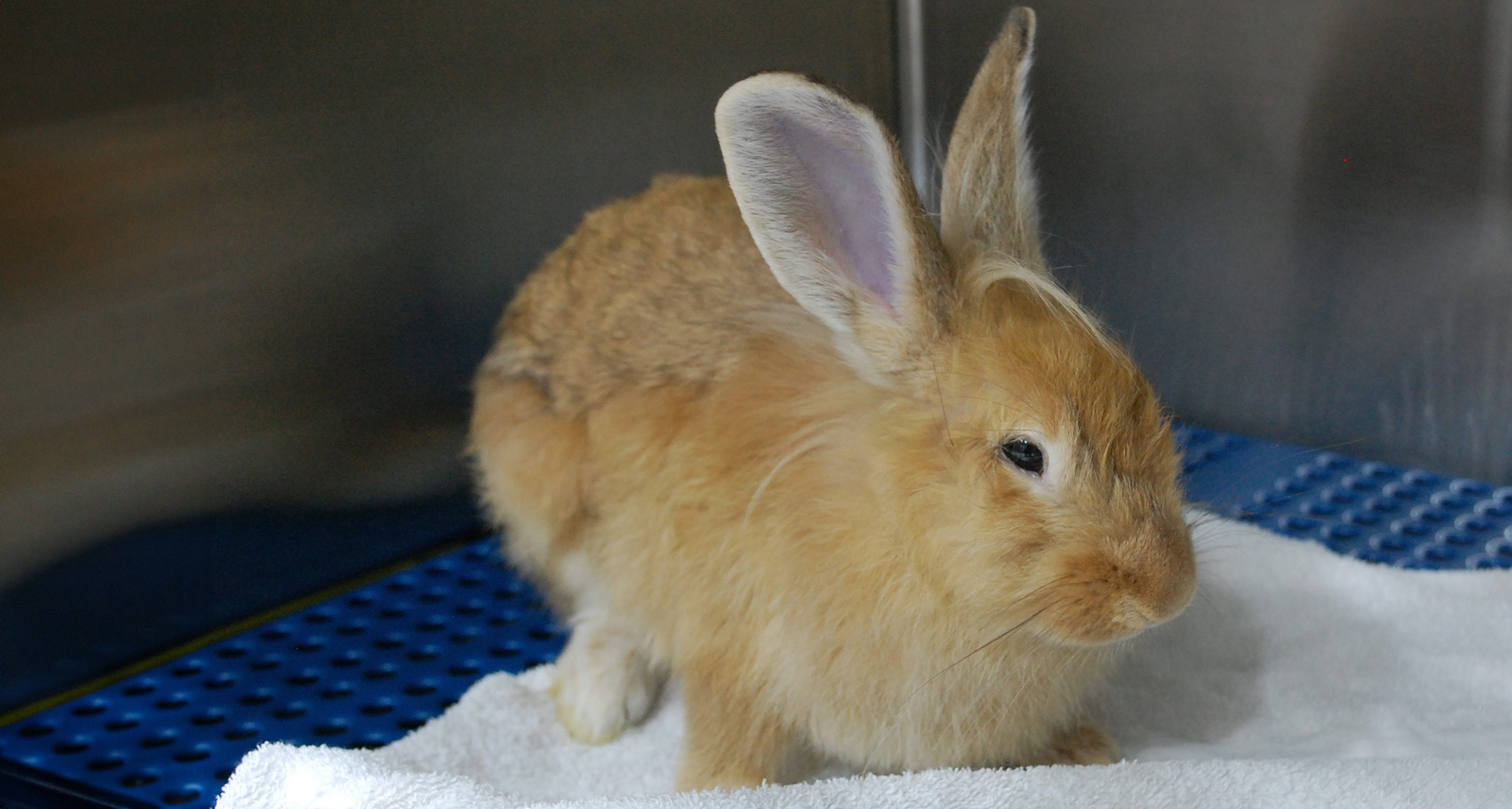Should I Sterilise My Rabbit?



Male rabbits can be castrated around 4 months when their testicles descend into the scrotal sacs. Cryptorchid animals have testicles retained within the abdominal cavity or residing in the inguinal canal or prescrotal regions. Retained testicles are often a lot smaller than scrotal testicles, and are prone to medical conditions such as testicular torsion or cancer. Bilaterally undescended testes are normally infertile because of heat-induced damage to the sperm-producing cells of the testicle.
Benefits of Sterilisation
- Sterilising your rabbit will prevent unwanted pregnancies. Unlike dogs that come into heat twice a year, rabbits are induced or reflexive ovulates. They ovulate (release eggs) after mating. Gestation period is around 31 days with an average litter of 6 to 8 babies. A rabbit can become pregnant again a few days after giving birth.
- Sterilised rabbits tend to live longer and healthier lives. Female rabbits are susceptible to malignant mammary cancer which is associated with uterine cancer and spreads quickly. The risk of reproductive cancers and pyometra (pus accumulation in uterus) is eliminated when they are sterilised between 6 months and 2 years of age.
- Neutered males are calmer and less prone to territorial and destructive behaviour like biting, lunging, urine spraying and fighting with other rabbits. Rabbits are social animals and enjoy the company of other rabbits. After sterilisation, male and female rabbits can be placed together without the risk of unwanted pregnancies.
Dr. Daphne Low, Mount Pleasant Animal Farrer
Male rabbits can be castrated around 4 months when their testicles descend into the scrotal sacs. Cryptorchid animals have testicles retained within the abdominal cavity or residing in the inguinal canal or prescrotal regions. Retained testicles are often a lot smaller than scrotal testicles, and are prone to medical conditions such as testicular torsion or cancer. Bilaterally undescended testes are normally infertile because of heat-induced damage to the sperm-producing cells of the testicle.
Benefits of Sterilisation
- Sterilising your rabbit will prevent unwanted pregnancies. Unlike dogs that come into heat twice a year, rabbits are induced or reflexive ovulates. They ovulate (release eggs) after mating. Gestation period is around 31 days with an average litter of 6 to 8 babies. A rabbit can become pregnant again a few days after giving birth.
- Sterilised rabbits tend to live longer and healthier lives. Female rabbits are susceptible to malignant mammary cancer which is associated with uterine cancer and spreads quickly. The risk of reproductive cancers and pyometra (pus accumulation in uterus) is eliminated when they are sterilised between 6 months and 2 years of age.
- Neutered males are calmer and less prone to territorial and destructive behaviour like biting, lunging, urine spraying and fighting with other rabbits. Rabbits are social animals and enjoy the company of other rabbits. After sterilisation, male and female rabbits can be placed together without the risk of unwanted pregnancies.
Dr. Daphne Low, Mount Pleasant Animal Farrer
Male rabbits can be castrated around 4 months when their testicles descend into the scrotal sacs. Cryptorchid animals have testicles retained within the abdominal cavity or residing in the inguinal canal or prescrotal regions. Retained testicles are often a lot smaller than scrotal testicles, and are prone to medical conditions such as testicular torsion or cancer. Bilaterally undescended testes are normally infertile because of heat-induced damage to the sperm-producing cells of the testicle.
Benefits of Sterilisation
- Sterilising your rabbit will prevent unwanted pregnancies. Unlike dogs that come into heat twice a year, rabbits are induced or reflexive ovulates. They ovulate (release eggs) after mating. Gestation period is around 31 days with an average litter of 6 to 8 babies. A rabbit can become pregnant again a few days after giving birth.
- Sterilised rabbits tend to live longer and healthier lives. Female rabbits are susceptible to malignant mammary cancer which is associated with uterine cancer and spreads quickly. The risk of reproductive cancers and pyometra (pus accumulation in uterus) is eliminated when they are sterilised between 6 months and 2 years of age.
- Neutered males are calmer and less prone to territorial and destructive behaviour like biting, lunging, urine spraying and fighting with other rabbits. Rabbits are social animals and enjoy the company of other rabbits. After sterilisation, male and female rabbits can be placed together without the risk of unwanted pregnancies.
Dr. Daphne Low, Mount Pleasant Animal Farrer